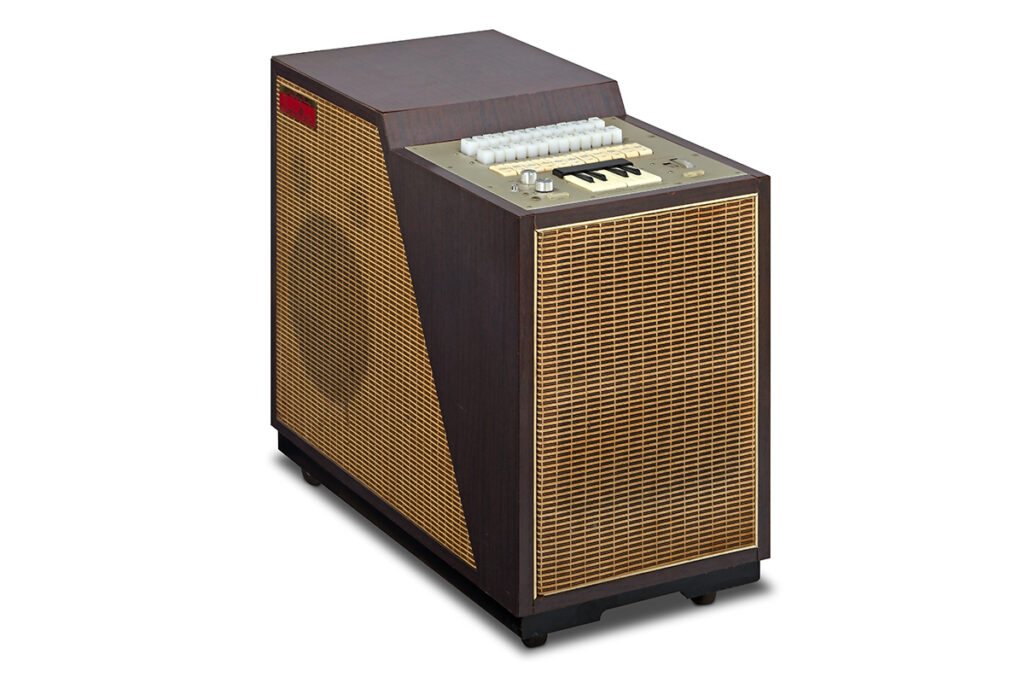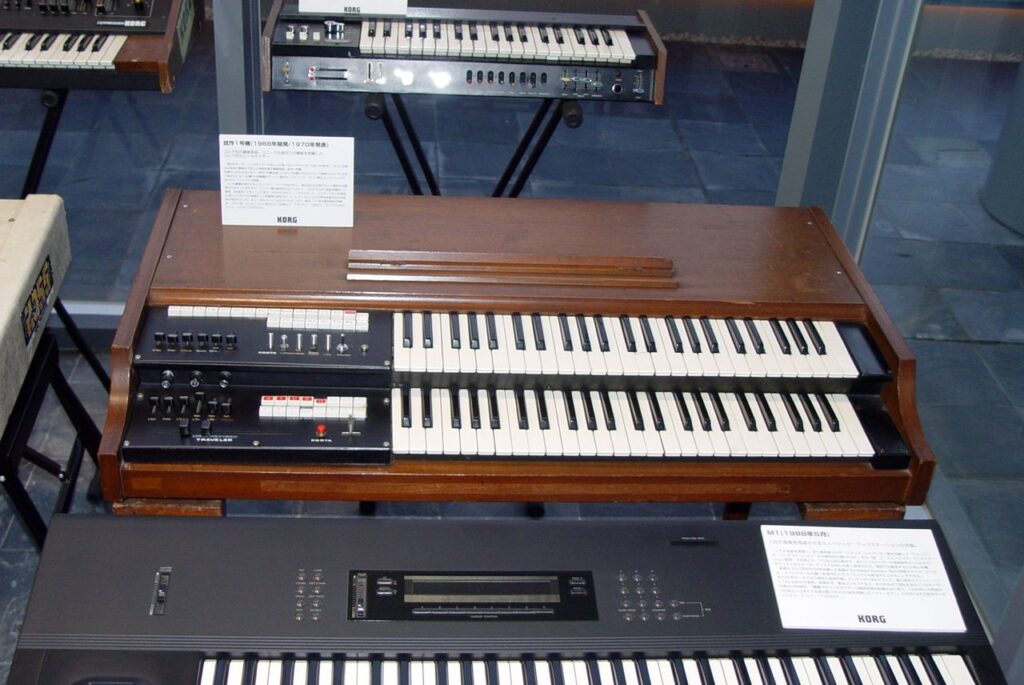Tsutomu Katoh and Korg

Early History
KORG’s founder, Tsutomu Katoh was born in Nagoya on August 28, 1926 (Taisho 15) to a merchant family that ran a livestock feed wholesale business along the Iida Highway. These were tough times in Japan. The Great Kanto Earthquake had hit the capital city of Tokyo directly in 1923, leaving 140,000 people dead and missing. The impact of the earthquake and a recession, plunged Japan into financial crisis in 1927. So Katoh grew up in a time where there was a lot of financial uncertainty in Japan

World War II and the aftermath of the war
In 1937 (Showa 12), when Katoh was 12 years old, the China-Japanese War broke out, and the following year, the National Mobilization Law was enacted, and the whole nation was involved in the war. When World War II broke out in 1939 (Showa 14) and a price control order was issued in Japan, the Katoh family was unable to conduct normal business activities. Katoh studied hard during the war and graduated from the prestigious Nagoya Commercial High School in 1944 (Showa 19).
Katoh was old enough to be drafted, so he decided to join the navy and was assigned to a special unit at Yokosuka near Tokyo training for missions in a five-seat submarine, known as the Koryu.

It is lucky for the music industry that the war ended in 1945 (Showa 20) without Katoh going on a mission because the Koryu were kamikaze submarines. They were supposed to go out and find American battleships and then ram directly into them. Though originally designed to carry two 17.7-inch torpedoes externally, a torpedo shortage caused most, if not all, to be fitted with a 1300-pound internal warhead for employment on suicide missions.

Japan was decimated after the war. In addition to the destruction of Japan’s social infrastructure, the product distribution system had completely collapsed due to shortages of supplies and state control during the war. In Tokyo, large-scale black markets were born in Shinbashi, Shinjuku, Yotsuya, and Ikebukuro, and played a role in improving the serious food situation in the capital.
Katoh always had a keen business sense and he realized that even though his family’s background was in food wholesale, that the profit margins after the war were far higher for electric wires and automobile parts for which demand was rising amid post-war reconstruction.
The American army was basically running Japan in the early years after the war so Katoh went to the Occupation Forces office (the Dai Ichi Building in Tokyo) with what little money he had and an English dictionary. At first, he was turned away, but eventually he managed to get people to listen to him, and he was able to purchase electric wires. This wire was sold at a price several dozen times higher than the purchase price.

By about 1947, as food and commodity supplies began to improve, the black market dwindled and was replaced by formal traders. At that time, Katoh packed the money he earned into his rucksack and traveled around the country. By the time he reached Sapporo (the capital of Hokkaido in the far north), all the money he had earned had run out, and had no money to return to Nagoya. All he had left was his Japanese- English dictionary so he took this dictionary to a pawn shop and somehow managed to raise the money to get to Tokyo.
Katoh did a number of odd jobs including selling newspapers on the street and then he joined the Odakyu Construction company which was involved in the development of the Kabukicho area in Shinjuku. At that time, Kabukicho was becoming Tokyo’s entertainment district, with new stores opening one after another.

Through his workplace connections in 1950, Katoh was approached with the idea of becoming the owner of a club (Minx) in Kabukicho. He decided to quit his job at the real estate company and become involved in club management. Katoh was a shrewd businessman and eventually he was managing four businesses – Minx, Club Hana, a high end nightclub with hostesses and nightly music ranging from popular to classical, Lausanne a restaurant and Phoenix, a store that sold all different kinds of general merchandise.

Music was starting to be a big deal in Japan especially when NHK began its New Year’s Eve television NHK Kōhaku Uta Gassen ( “NHK Red and White Song Battle”). Starting on radio in 1951 and then on both radio and TV in 1953, this year end celebration launched the careers of many Japanese pop performers and continues as a tradition today.
Although Katoh was not a musician himself it was his days managing a club where he developed his ear and learned alot about how musicians felt about their craft.
Katoh came up with the idea from a toy keyboard that was sold at the Kabukicho operations he ran and the transformation from night club management to musical instrument company was about to take a dramatic turn based on a musician who played at Katoh’s nightclub.
When keyboard player and author Julian Colbeck came to Japan in 1990, he asked Chairman Katoh what led him to start Korg. Much to both Julian’s (and the translator’s) surprise Katoh said “to finance a gambling trip to Las Vegas”.


Tadashi Osanai was a professional accordion player who had three passions in life- accordion, electronics and gambling. Osanai-san was a frequent player at Club Hana with a trio of comprised of himself on accordion, a bass player and a drummer. He convinced Katoh to lend him the equivalent of $500 to go to Akihabara and buy parts to build a drum machine. Osanai–san had seen the Wurlizer Sideman and thought he could build a better one. He also told Katoh that all the drummers he knew were a bit unreliable in their timing especially after drinking and that a machine could be more precise.
Osanai-san dream was to go to Las Vegas and gamble at one of the famous casinos.
So Katoh and Osenai-san developed the Doncamatic. The name comes from the sound -Don represents that Bass Drum sound and Ka the sound of the Claves/Snare.
A few years later Katoh met and started a partnership with Fumio Mieda who would develop the first Korg synthesizer.
The Doncamatic in action
Gordon Reid for Sound on Sound

Mieda developed the first Korg synthesizer labeled the Prototype Number 1. It featured some incredible innovations including a slider labeled Traveler which controlled a filter making the the double manual organ more of a polyphonic synth.

The essence of Chairman Katoh
Tsutomu Katoh was a truly unique character. He was a shrewd businessman, but often made decisions with his gut. He often said that if Korg spent lots of money developing a new product and only one musician discovered it and truly loved playing it, he would be satisfied.
He had an innate sense of style and fashion. When he was shown the first prototype of the Korg M1, he looked at it and within a couple of seconds said “The design is quite right, it doesn’t look appealing. It should be softer and have curves (like a woman). You should want to pick it up.” He pointed to an area and suggested a dimple. The result was the little round indentation that became an integral part of the M1’s distinctive look. He was always listening to the musicians and their needs.
The Youtube video below expresses the essence of Katoh-san.
A personal note from the author
Full disclosure (a note from the author Athan Billias)
I have written many of the articles on this site, but this article was special to me and took a long time because it is not just Chairman Katoh’s story, it is also partly my story.
I went to Japan for the very first time in the spring of 1986 on a business trip working for Korg USA.
Katoh-san had the idea that there should be an exchange program between Korg USA and Korg Inc. I went to Japan for what was supposed to be three months in the fall of 1986 and returned 7 years later after working as the head of product planning and sound design at Korg Inc in Japan for all those years.
I had the honor of working closely with all the Korg people who made the Korg M1 the most successful commercial synthesizer of all time including the group of sound designers who still call themselves proudly “the MIDI Patch Boys”.

Chairman Katoh and all the people at Korg Inc in Japan changed my life and I would not be where I am today except for their mentoring and guidance.
When I think of Chairman Katoh, I am often reminded of the Japanese proverb -地震雷火事親父 . These are the four things you should be afraid of “Earthquakes, Lightning, Fire, and the Old Man”.
Somehow it seems fitting that Katoh-Kaicho (Chairman Katoh) passed away on MARCH 15, 2011 only 4 days after the great earthquake and tsunami that devastated the Fukushima area. He was himself a force of nature.
This article focuses on the early history of Chairman Katoh and the very beginnings of Korg (thanks to a book on Korg’s history provided to me by Korg Inc.)
Below are links to several great resources about Korg’s history and even a song by Keith Emerson dedicated to Katoh-san. He touched so many artists and musicians lives both directly and through the products his company made.
But in some upcoming articles about Karl Hirano, I plan to tell the intricate story of the relationship between Yamaha, Korg and Dave Smith and reveal some details that have never been made public before.
External Resources on the history of Korg
- https://www.soundonsound.com/music-business/history-korg-part-1
- https://www.soundonsound.com/music-business/history-korg-part-2
- https://www.soundonsound.com/music-business/history-korg-part-3
- https://ww1.namm.org/library/oral-history/tsutomu-katoh